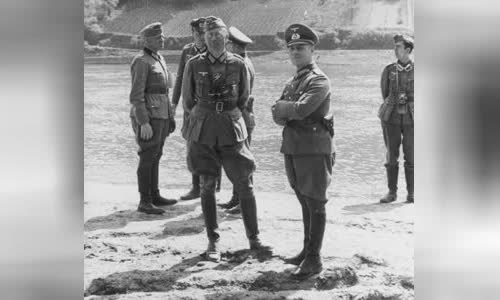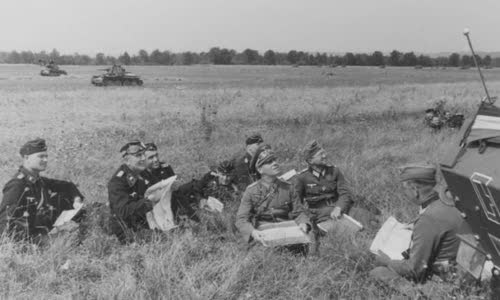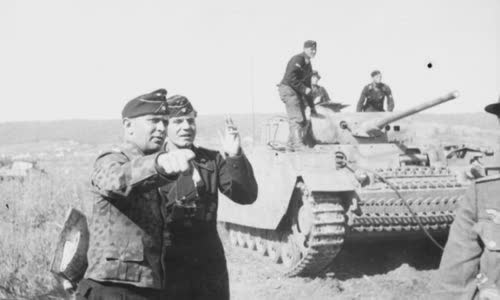The 7th Division Division was called a ghost Division because of the advantage of the French invasion, but was dissolved by the Red Army.
Fascinating Germany invaded the French mid-1940 and won rapid victory.

Photo: Bundesarchiv
After invading Poland, the light-class Division No. 2 was renamed Digital Division No. 7, equipped with 218 tanks and became one of the 10 main armored divisions of Germany.
Germany Erwin Rommel (Monday from right to Sang) Supervise soldiers to cross the river in early 1940. Photo: Bundesarchiv.
In February 1940, General Erwin Rommel was appointed commanding the division.
On May 10, 1940, Germany launched the Fall Gelb campaign to invade France with 135 divisions, including all armored divisions.
This force crosses the border between Germany and Belgium, with the goal of crossing the Meuse River.
The 7th Division was first stumbled in Chabrehez, but it didn't stop their momentum.
Despite suffering from some losses, German troops did not face difficulties when invading France.
Prime Minister Winston Churchill ordered General Giffard Le Quesne Martel, his 50th Infantry Division commander, opened a counterattack to prevent German progress on France.

Photo: ?nh: Bundesarchiv.
Martel expects to two mobile units as key attackers, including a tank battalion, 151 brigade infantry, a squadcase, scouting and a gun against an anti-tank.
On May 21, 1940, Division No. 7 German encountered the 6th motor infantry regiment.
Rommel (Tuesday from right) and the 7th Division Steering Committee in the Battle in France in June 1940.
When the France and Germany's False False Agreement takes effect on June 25, 1940, Division No. 7 is 300 km from the Spanish border.
The speed of marching and winning quickly caused the No. 7 division to nickname MA Division, because even the German military commander did not grasp the movement of this unit in combat.
February 1941, Division No. 7 returned to Germany.
On June 22, 1941, Germany launched the Barbarossa campaign, a total attack aimed at the Soviet Union.
The resistance of the Soviet Union is weaker than expected, helping Division No. 7 controls many territories in a short time.

Photo: Bundesarchiv
The following months, Division No. 7 coordinated with other armored units to control many Soviet towns, because the Red Army could not build an appropriate defense system.
After joining some battles with the Soviet Union, the 7th Division was transferred to France in May 1942 to protect the coast with the number 1. The situation of negative changes in the Eastern Front made this division
Commanding the armored regiment No. 25, the spearhead of the 7th Division, in 1943. Photo: Bundesarchiv.
During the summer of 1943, the 7th Division was located in the armored squad of the Kempf Army to fight in the Kursk, but suffered heavy losses and was coordinated to the 48th Army of General Hasso von Manteuffel
Two of the last big battles that the 7th Division fought at the eastern front in Kiev and the German counterattack in Zhitomir.
In 1944-1945, 7th Division struggled to fight because most soldiers were rookies.
In May 1945, after many matches of the Red Soviet Red Army, the ruins of the 7th Division flee to the forest and surrender to the British army in northwest Berlin.



 John Cullen
John Cullen







